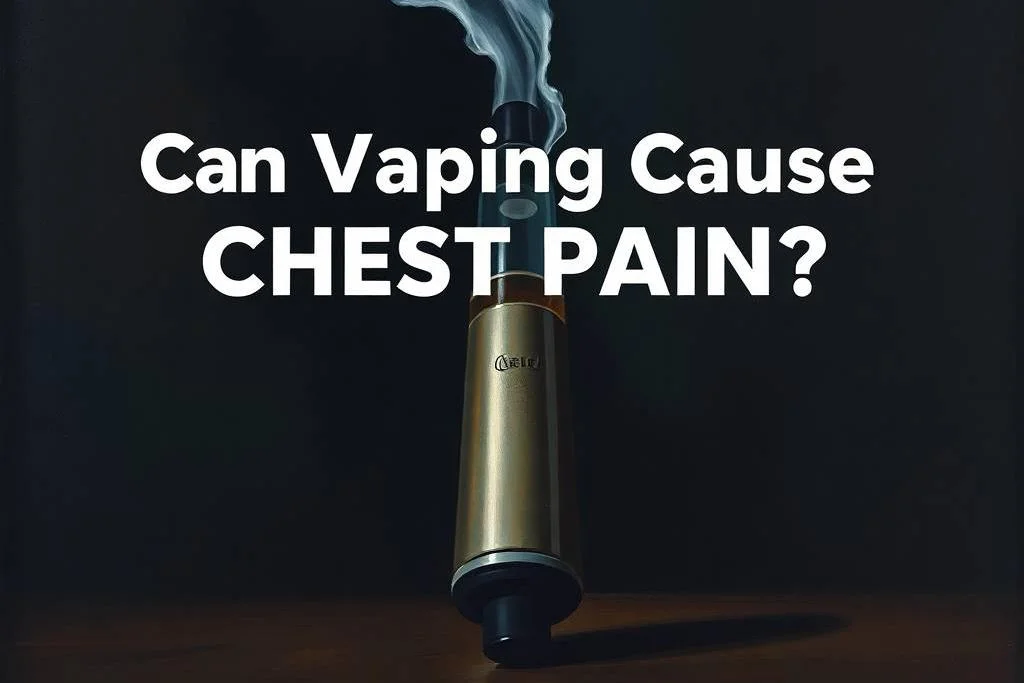Can Vaping Cause Chest Pain?
As vaping continues to grow in popularity, questions around its safety and long-term effects have taken center stage. One concern that frequently surfaces is: can vaping cause chest pain? This guide explores the potential causes of chest discomfort linked to vaping, who may be most at risk, and what users should do if they experience symptoms.
Can Vaping Cause Chest Pain?
Yes, vaping can cause chest pain in some individuals. While e-cigarettes are often marketed as a less harmful alternative to traditional smoking, they are not without risks. Chest pain can be a signal that the body is reacting negatively to certain compounds found in vape aerosols or that there's an underlying health issue being exacerbated by vaping.

Common Causes of Chest Pain from Vaping
1. Nicotine Irritation
Many vape juices contain nicotine—a known stimulant that can constrict blood vessels, elevate heart rate, and increase blood pressure. For new or sensitive users, these effects may lead to chest discomfort or tightness.
2. Lung Irritation
Vape aerosols contain substances like propylene glycol (PG), vegetable glycerin (VG), flavorings, and sometimes unknown additives. Inhalation of these compounds, especially in high concentrations, can irritate the airways and lungs, leading to inflammation and pain in the chest.
3. E-cigarette or Vaping Use-Associated Lung Injury (EVALI)
This serious condition was first identified in 2019 and is linked primarily to vaping products containing THC and vitamin E acetate. However, non-THC vapes have also been implicated in similar lung injuries. Symptoms include:
- Chest pain
- Shortness of breath
- Cough
- Fever and fatigue
Immediate medical attention is required if these symptoms appear.
4. Overuse and Deep Inhalation
Frequent vaping sessions or deep puffs can strain the respiratory system, especially in new users or those with pre-existing conditions like asthma. This can manifest as sharp or persistent chest pain.
5. Underlying Health Conditions
Vaping may exacerbate existing cardiovascular or pulmonary issues. Individuals with heart disease, anxiety, or lung conditions might experience chest pain triggered or worsened by vaping.
Who Is Most at Risk?
- New users who are unfamiliar with how their bodies respond to vaping.
- Individuals with respiratory conditions such as asthma or chronic bronchitis.
- People using high-nicotine vapes or vaping excessively.
- Those using black-market or unregulated vape products, which may contain harmful contaminants.
What to Do If You Experience Chest Pain While Vaping
- Stop Vaping Immediately: Discontinue use and observe if the symptoms improve.
- Seek Medical Advice: If chest pain is severe, persistent, or accompanied by other symptoms (shortness of breath, dizziness, nausea), seek immediate medical attention.
- Review Your Vape Product: Check the ingredients and nicotine strength. Consider switching to lower concentrations or better-regulated products.
- Stay Hydrated: Some users report chest tightness due to dehydration caused by PG-heavy vape juices.

Preventing Vape-Related Chest Pain
- Use products from reputable brands with transparent lab testing.
- Avoid DIY or black-market vape liquids.
- Start with lower nicotine concentrations, especially for new users.
- Take slower, shorter puffs to reduce strain on the lungs.
Conclusion
While vaping is often promoted as a smoking cessation tool, it is not without its health concerns. Can vaping cause chest pain? Yes—and in some cases, that pain could be a warning sign of more serious underlying issues. Understanding the potential risks and listening to your body is essential for making informed decisions about vaping.



